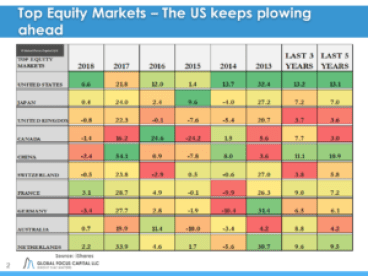 What’s more important to investors than real returns?
What’s more important to investors than real returns?
In a previous note (Leaving Money on the Table) we wrote about the impact of taxes and fees on net strategy returns. Our focus was more conceptual and we highlighted the highly customized nature of after-tax portfolio management advice.
Some of our readers, however, remembered empirical work we had done a number of years back using broad US stock and bond market returns. We decided to update our previous research on the effect of taxes, fees and inflation on the real return to investors.
Our methodology is simple. By necessity we employ some simplifying assumptions regarding fees and taxes. We use S&P 500 and US Government Ten-Year Note returns from the end of 1982 to the end of 2015.
We subtract three levels of “costs” from gross returns:
- Management Fees
- Taxes (short and long-term)
- Purchasing Power (inflation)


The results are eye opening and a timely reminder of the drag on investment returns. A lot of investors would be surprised to see the extent of this drag on their portfolios but in the real world the results may actually turn out to be even worse.
Why? For one many investors pay high fees on their portfolios and ignore the tax efficiency of their strategies.
While not as sexy as a discussion of strategy returns or smart beta minimizing the extent of the cost drag from fees, taxes and loss of purchasing power is an important part of sustained wealth creation
Management fees on portfolios should be scrutinized for value add. Portfolio management has a cost. Index strategies are now available on most market segments in equity and fixed income markets at low cost but the combination of strategies and overall asset allocation still needs to be managed.
Jack Bogle has been talking about the importance of controlling fees for years and investors as a group may have become recently more fee sensitive especially as the realization sinks in that we are most likely going to be living in a low return environment for the next decade.
Paying high fees in a low return environment would certainly impair wealth accumulation targets. Paying fees commensurate with value add should be the goal of investors.
As Benjamin Franklin once said, taxes are as certain as death and as such the best that one can do is minimize the tax bite of investment strategies. Tax loss harvesting, low portfolio turnover, proper strategy selection, and legal deferment of taxable events are elements of a coherent well-designed tax minimization strategy.
Finally, a huge drag on net real returns has been the loss of purchasing power. While inflation in recent years has been below historical norms the loss of purchasing power can best be thought of as an almost invisible downward pull on wealth creation efforts.
Not all investment strategies behave in the same manner in the face of inflationary forces. Properly aligning investment strategies to the expected inflationary environment is an important component of minimizing the deleterious effects of a loss of purchasing power.
If you would like to read our full report please fill out the information below and hit the Send button
Eric J. Weigel
Managing Partner, Global Focus Capital LLC
Feel free to contact us at Global Focus Capital LLC (mailto:eweigel@gf-cap.com or visit our website at https://gf-cap.com to find out more about our asset management strategies, consulting/OCIO solutions, and research subscriptions.
DISCLAIMER: NOTHING HEREIN SHALL BE CONSTRUED AS INVESTMENT ADVICE, A RECOMMENDATION OR SOLICITATION TO BUY OR SELL ANY SECURITY. PAST PERFORMANCE DOES NOT PREDICT OR GUARANTEE FUTURE SIMILAR RESULTS. SEEK THE ADVICE OF AN INVESTMENT MANAGER, LAWYER AND ACCOUNTANT BEFORE YOU INVEST. DON’T RELY ON ANYTHING HEREIN. DO YOUR OWN HOMEWORK. THIS IS FOR INFORMATIONAL PURPOSES ONLY AND DOES NOT CONSIDER THE INVESTMENT NEEDS OR SUITABILITY OF ANY INDIVIDUAL. THERE IS NO PROMISE TO CORRECT ANY ERRORS OR OMISSIONS OR NOTIFY THE READER OF ANY SUCH ERRORS











